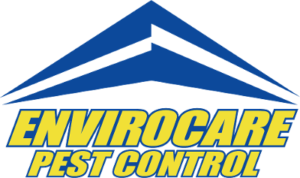Do carpenter ants eat wood? The simple answer is no, but there’s more to it than that. For instance is what you’re looking at really a carpenter ant? In the months of April-August our phones are kept busy with what I think is the number one pest in CT. The carpenter ant.
In order to have a discussion about carpenter ants and whether carpenter ants eat wood or not we’ll need to know what they look like verses what a termite looks like. Termites actually do feed on wood and have 2 defined body sections.
To the left you’ll see termite workers found in their natural environment, the soil. This picture was taken at a home located in Fairfield, CT where termites were foraging in the soil near an old dead tree. In their natural environment termites are good as they can break down old dead trees that have fallen to the ground.
Next, you’ll see a classic picture of a carpenter ant taken in Newtown, CT. The picture clearly shows the 3 body sections ants have as opposed to a termites 2 body sections.
Carpenter ants don’t eat wood they excavate both moist and dry voids and kick the sawdust out as a material called frass. Frass is a combination of sawdust and insect parts from a developing nest.
The Life Cycle
Carpenter ants have a 4 stage life cycle that consists of egg, larva, pupa and adult. Carpenter ant colonies are started in very moist areas by a singular fertilized queen. This queen looks for a suitable nesting spot and begins here first brood. The colony will soon have all the stages of the life cycle present as it grows including major and minor workers. After about 3 years the colony will produce its own reproductive as pictured below.
Male and female reproductives differ from termite reproductives in both body and wing structure. Termites have 4 wings which are clear and of equal length while ants have 4 wings 2 long and 2 short.
You’ve got ants!
When we get calls from customers for ant control we always ask “where are you seeing ants”. Everyone with few exceptions will say the kitchen and the bathroom. The reason is that this is where the moisture and food source for the colony are located. So where are the ants really nesting?
Hide and seek
All ant calls need to have a thorough inspection on the day of their service. The
reason is that carpenter ants are very good at hiding their colonies in wall cavities and wet voids. However, to the experienced technician or inspector there should be some clues left behind.
One thing that can sometimes be easily spotted on an inspection is frass (sawdust) or discarded pupal casings as was found in the picture to the right in a home in Ridgefield, CT with a carpenter ant issue.
A home with carpenter ants is likely to have conditions present that allowed the ants to set up shop. In most cases carpenter ant issues need to be tended to by a professional company that know what they’re looking for and how to address the results of an inspections
If your CT home has carpenter ants and needs service call Envirocare Pest Control at 1-888-879-6481. We can help.

